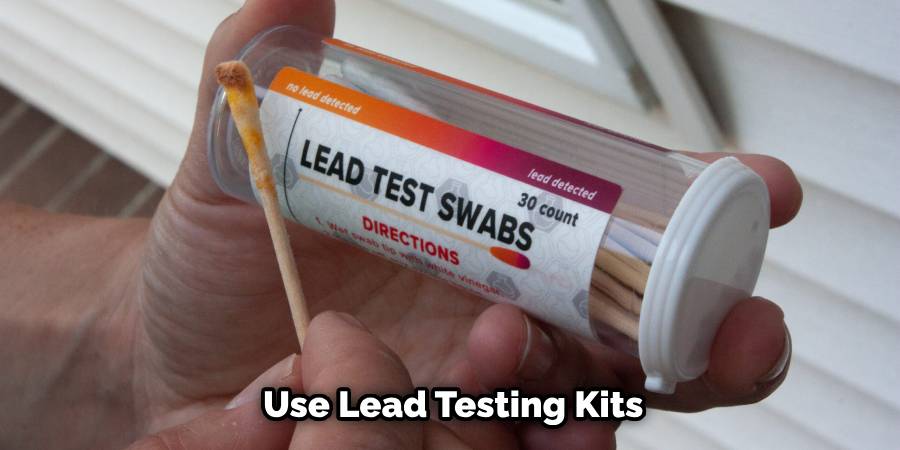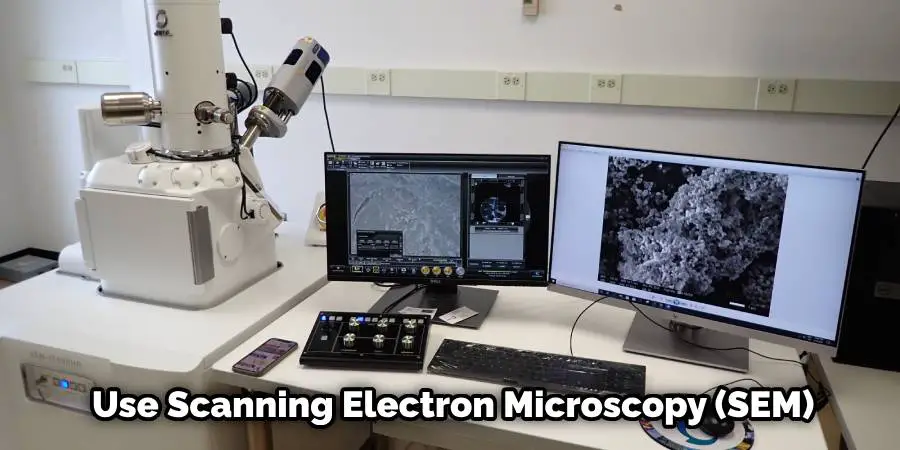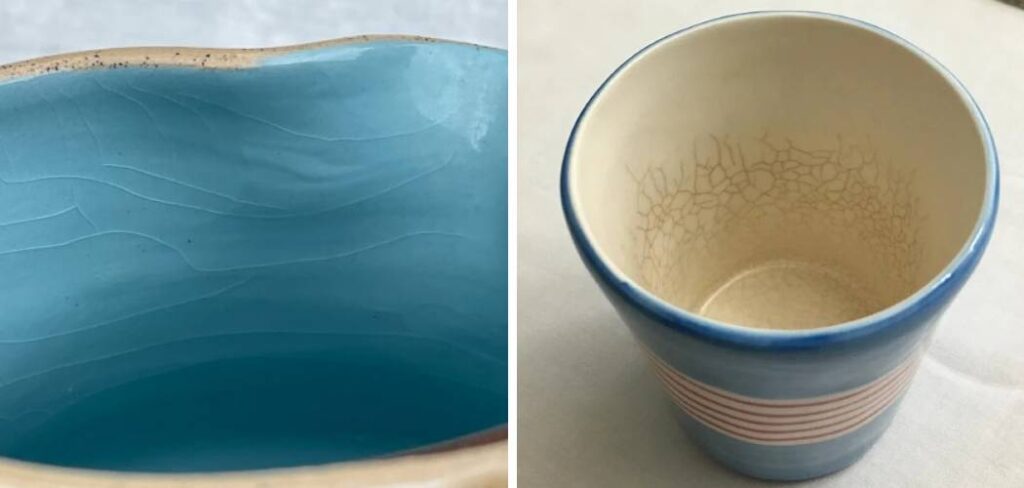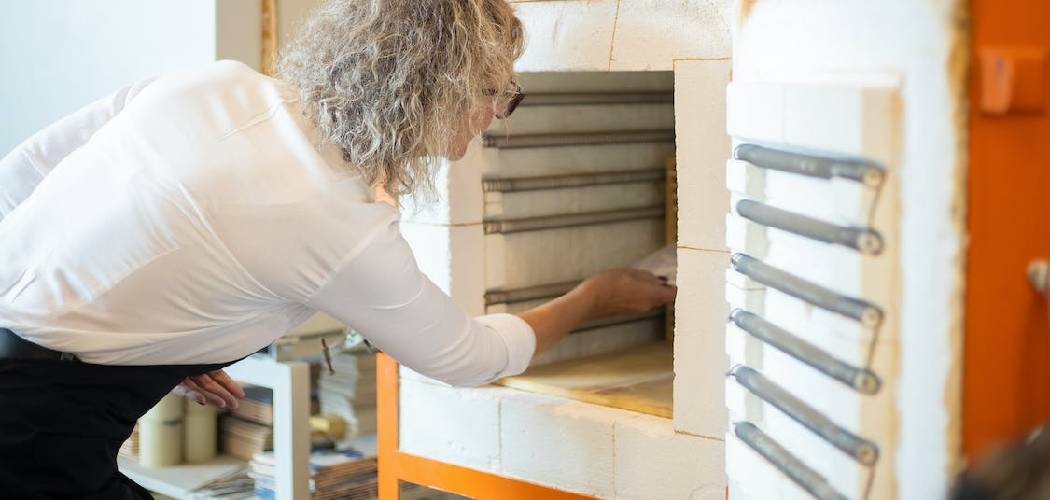Curious if your cherished ceramics contain traces of lead? Concerned about the safety of your favorite dishes or decorative pieces? Fear not! In this comprehensive guide, we’ll walk you through simple yet essential methods for how to test for lead in ceramics. From understanding the risks associated with lead exposure to practical step-by-step testing procedures, we’ve got all the information you need to ensure the safety of your household items. Let’s dive in and empower you with the knowledge to make informed decisions about your ceramic collection’s health hazards.

Table of Contents
The Importance of Testing for Lead in Ceramics
The importance of testing for lead in ceramics cannot be understated, especially considering the health risks associated with lead exposure. Lead is a toxic metal that can cause serious health problems if ingested or inhaled, including neurological damage, kidney disease, and reproductive issues. Ceramics, particularly older ones or those produced in countries with less stringent safety standards, may have been glazed or painted with lead-containing materials.
When these ceramics are used for eating, drinking, or cooking, lead can leach into food and beverages, posing a significant health risk to individuals and families. Therefore, taking proactive steps to test ceramics for lead content is crucial to prevent lead poisoning and ensure the safety and well-being of all who may come into contact with these items.
Potential Health Risks Associated with Lead Exposure
Lead exposure poses serious health risks that can affect nearly every system within the body and is particularly harmful to children and pregnant women. In children, even low levels of lead exposure can result in learning disabilities, behavioral issues, and decreased IQ. For adults, chronic exposure to lead can lead to hypertension, kidney damage, and reproductive problems in both men and women.
Pregnant women are especially at risk, as lead exposure can cause complications such as premature birth or reduced growth of the fetus. Importantly, the effects of lead exposure are often irreversible, emphasizing the critical need for prevention and caution, especially in households with items that might contain lead, such as certain ceramics.
How Lead is Used in Ceramic Glazes and Materials
Lead has been commonly used in the manufacturing of ceramics for centuries due to its ability to lower the melting temperature of glazes and enhance their brightness and color. When lead is incorporated into ceramic glazes, it acts as a flux, which means it helps the glaze melt and bond to the ceramic body at a lower temperature during the firing process.
This not only makes the manufacturing process more economical but also allows for a wider range of vibrant and glossy finishes that are appealing to consumers.
Additionally, lead-based glazes can improve the durability and appearance of ceramics, making them more resistant to wear and tear over time. However, the downside of using lead in ceramics, particularly those intended for food and beverage use, is the potential for lead to leach into food and drinks if the ceramics are not properly formulated, fired, or handled.
This has led to regulations and safer alternatives in many countries, aiming to reduce the health risks associated with lead exposure. Despite these efforts, lead-based glazes are still found in some ceramic products, highlighting the importance of testing and awareness among consumers.
10 Methods How to Test for Lead in Ceramics
Lead Testing Kits:

One of the most accessible methods for testing lead in ceramics is through lead testing kits. These kits are readily available at hardware stores, online retailers, and home improvement centers. They typically contain all the necessary materials and instructions for conducting the test at home. To use a lead testing kit, simply follow the provided instructions, which often involve rubbing a swab or strip on the surface of the ceramic item and observing any color changes that indicate the presence of lead.
X-Ray Fluorescence (XRF) Testing:
X-Ray Fluorescence (XRF) testing is a non-destructive method commonly used to analyze the elemental composition of materials, including ceramics. This method involves using an XRF analyzer to emit X-rays onto the surface of the ceramic item. The X-rays excite the atoms in the material, causing them to emit characteristic fluorescent X-rays. By analyzing the emitted X-rays, the XRF analyzer can determine the presence and concentration of lead and other elements in the ceramic without damaging the item.
Acid Etching:
Acid etching is a straightforward method that involves applying a dilute acid solution, such as vinegar or lemon juice, to the surface of the ceramic item. If the ceramic contains lead, the acid will react with the lead, causing a visible reaction, such as fizzing or discoloration. However, it’s essential to note that acid etching can damage the surface of the ceramic, so this method is best suited for testing small, inconspicuous areas.
LeadCheck Swabs:
LeadCheck swabs are another convenient option for testing ceramics for lead content. These disposable swabs contain chemicals that react with lead to produce a color change, indicating the presence of lead. To use a LeadCheck swab, simply crush the ampoule inside the swab to release the chemicals, then rub the swab on the surface of the ceramic item. If lead is present, the swab will change color within a few minutes, providing a clear indication of contamination.
Atomic Absorption Spectroscopy (AAS):
Atomic Absorption Spectroscopy (AAS) is a highly sensitive analytical technique used to quantify the concentration of specific elements in a sample, including lead in ceramics. This method involves vaporizing the sample and passing light through the resulting vapor. The absorption of light by the vapor is measured, allowing for the precise determination of the lead concentration in the ceramic.
Scanning Electron Microscopy (SEM) with Energy Dispersive X-Ray Spectroscopy (EDS):

Scanning Electron Microscopy (SEM) combined with Energy Dispersive X-Ray Spectroscopy (EDS) is a powerful technique for analyzing the composition of materials at the microscopic level. In this method, a SEM is used to scan the surface of the ceramic item, while EDS detects and analyzes the X-rays emitted by the sample. This allows for the identification and quantification of lead and other elements present in the ceramic.
Portable X-Ray Fluorescence (pXRF) Analyzers:
Portable X-Ray Fluorescence (pXRF) analyzers offer a convenient and efficient way to perform on-site testing of ceramics for lead content. These handheld devices emit X-rays onto the surface of the ceramic item and measure the resulting fluorescence to determine the elemental composition, including the presence of lead. pXRF analyzers are commonly used by regulatory agencies, environmental consultants, and researchers to assess lead contamination in various materials.
Laboratory Analysis:
For comprehensive testing and accurate results, laboratory analysis by accredited testing facilities is recommended. Laboratories equipped with advanced instrumentation, such as Inductively Coupled Plasma Mass Spectrometry (ICP-MS) or Atomic Emission Spectroscopy (AES), can provide precise measurements of lead concentration in ceramics. Samples of the ceramic material are prepared and analyzed using these techniques, ensuring reliable results for regulatory compliance or peace of mind.
Home Lead Testing Services:
Several companies offer home lead testing services where you can send samples of your ceramic items for analysis. These services typically involve collecting small samples of the ceramic material and mailing them to the company’s laboratory for testing. Once analyzed, the company provides a detailed report of the lead content in the samples, allowing you to assess the safety of your ceramics from the comfort of your home.
Visual Inspection and Risk Assessment:
While not as precise as laboratory testing or instrumental methods, visual inspection and risk assessment can provide valuable insights into the likelihood of lead contamination in ceramics. Examine the ceramic item for any signs of wear, such as chipping, cracking, or flaking, as these areas are more likely to release lead particles. Additionally, consider the age, origin, and manufacturing process of the ceramics, as older items or those from certain regions may be more prone to containing lead.
Understanding the Difference Between Safe and Unsafe Levels of Lead in Ceramics
Determining the safe versus unsafe levels of lead in ceramics is crucial for ensuring public health and safety. Regulatory agencies, such as the United States Food and Drug Administration (FDA) and similar bodies worldwide, have established specific limits for lead content in ceramics, particularly those used for food and drink.
The safety threshold for lead varies depending on the product type and its intended use, but the overarching goal is to minimize lead exposure to the lowest possible levels. Ceramics intended for food use are subject to more stringent regulations due to the direct contact with consumables, which could lead to ingestion of lead.
The safe level of lead in ceramics is often defined as the amount that results in no detectable lead leaching into food or drink under standard conditions. Testing for this involves simulating typical usage conditions to see if lead leaches at levels considered to be harmful. Unsafe levels, conversely, are those that exceed the regulatory thresholds and pose a risk to health, potentially leading to lead poisoning if the ceramics are used frequently for eating or drinking. Symptoms of lead exposure can include abdominal pain, headaches, memory problems, and in severe cases, neurological damage.
Understanding and adhering to these guidelines is not only vital for manufacturers but also crucial for consumers who wish to ensure their household items are not a source of lead exposure. When evaluating the safety of ceramics, it’s essential to rely on accurate testing methods, as described in the previous sections, and consult regulatory standards to determine whether a specific item meets the safety criteria for lead content.
Conclusion
In conclusion, testing for lead in ceramics is a critical step in ensuring the safety of both users and collectors. Whether using DIY home testing kits or relying on professional laboratory services, conducting lead tests empowers individuals to make informed decisions about the use and handling of ceramic products. Interpreting test results accurately is essential, as it enables individuals to take appropriate action if lead is detected, whether it’s discontinuing use, seeking professional assistance, or implementing safety measures to minimize exposure risks.
By prioritizing safety and awareness, we can mitigate the potential health hazards associated with lead-containing ceramics, safeguarding the well-being of ourselves and our loved ones. Hopefully, this article gave you some helpful tips about how to test for lead in ceramics successfully, so now that you have the proper knowledge on how to get the job done, why not give it a try today?





